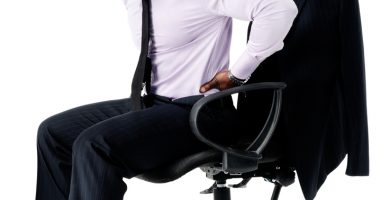Is your child’s school bag and shoes causing them pain and possibly problems in the future.
The Back Health Charity BackCare have highlighted that approximately 60% of children are carrying over weight school bags. Some primary school children are routinely carrying bags which weigh over 15% of their body weight (NHS, 2012). Not only are the bags too heavy, most children are wearing them in the most detrimental way, on one shoulder. These heavy school bags are often carried between lessons, as well as to and from school. Experts have voiced that carrying anything that weighs more than 15 per cent of the child’s body weight will be causing spinal damage, whatever bag you use.
Parents are warned that excessive load bearing on immature spines, such as carrying a heavy, poorly designed bag to and from school, could increase a child risk of suffering with back problems in the future (Amal H. Ibrahim., 2012). At a young age, a children’s spine is still developing, so having a heavy bag thrown over one shoulder can exert harmful forces on the spine and muscles and can actually affect the natural curve of the spine, possibly leading to scoliosis. Research has shown that if you experience back pain as a child, you are four times as likely to experience back pain in your adult life.
It is recommended childrens’ backpacks:
- Should weigh no more than 10 per cent of the child’s body weight (Olubusola Esther Johnson et al., 2011)
- Should be worn on both shoulders so the weight is evenly distributed.
- Should have a padded back panel and wide padded straps for increased comfort.
- The heaviest items should be packed so they are closest to the spine, to reduce strain.
- The straps should be adjusted so the backpack sits high up on the back and a waist strap can be used so the pelvis can hold some of the load.
- Should only contain the necessities (i.e. books needed that day).
The charity has also highlighted that other factors may contribute to children’s back problems, such as poorly designed chairs and unsupportive footwear (Mohd Azuan et al., 2010). Teenagers are particular vulnerable when wearing unsupportive shoes as the foot bones continue to grow through adolescence. Abnormal loading of pressure through the feet can cause the structure of the bones to change. This can lead to a change in their gait and this may cause knee, hip and low back problems.
It seems to be teenage girls which are most effected as many are wearing ballet type pumps, which are far too flat and provide no support. Without the correct support the arches, muscles and ligaments become stressed and strained. The typical pattern is that the foot/arches flatten and the lower leg turns inwards, causing the knees to work in an abnormal position and can contribute to knee or hip pain. If the shoes are too flat they are not providing any shock absorption and the teenager/child may also experience heel pain. If your child/teen insists on wearing a certain type of shoe that is not supportive enough, then you can insert a simple orthotic into the shoe, which will provide extra support.
It is recommended that school shoes:
- Should have a strap, velcro or laces to hold them on.
- Should be made out of natural or breathable fabric.
- Should have the necessary support and a small heel.
- Should have a deep toe box, so the toes have room to move and are not scrunched up.
The BackCare charity have stated that up to 80 per cent of the population experience back pain at some point in their life and interestingly many of the adults back problems can be traced to childhood. This highlights the importance of making changes now, as they will possibly lead to a decrease in back problems in adulthood.
References:
Amal H. Ibrahim. (2012). Incidence of back pain in Egyptian school girls: Effect of school bag weight and carrying way. World Applied Sciences Journal, 17 (11).
Mohd Azuan, M. et al. (2010). Neck, Upper Back and Lower Back Pain and Associated Risk Factors among Primary School Children. Journal of Applied Sciences, 10 (5), pp. 431-425.
Olubusola Esther Johnson et al., (2011). Percent of Body Weight carried by secondary school students in their bags in a Nigerian school. Journal of Musculoskeletal Research, 14 (2).
http://www.nhs.uk/news/2012/03march/Pages/rucksack-bags-back-pain-children.aspx
http://www.backcare.org.uk/blog/?p=186
http://www.dailymail.co.uk/health/article. Search: School children back pain.



